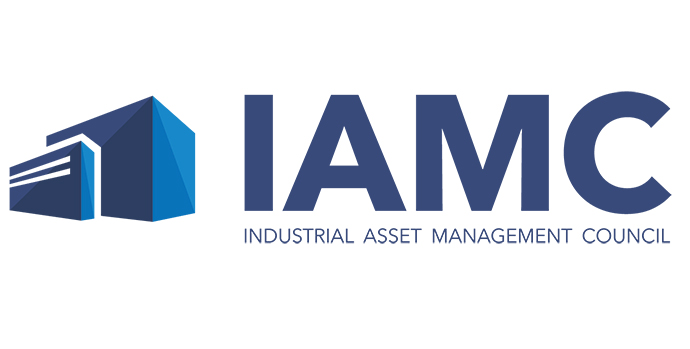In my last letter, in the November issue, I discussed the miles yet to go on the industry’s path to greater Diversity, Equity and Inclusion (DEI). The challenges that face the industry on this journey can open the doors — when they are viewed properly — to many exciting opportunities for individual IAMC members, their corporations and indeed for IAMC itself. Those opportunities are limited — and for that matter, capitalized on — only by individual imagination.
We discussed last issue the creation of internship programs within our organizations to foster the hiring and promotion of all underrepresented groups. A terrific place to start on this journey then is to ask ourselves what programs we have in place to foster, train and groom new recruits for promotions to more managerial roles.
A word here about promotions. It is one matter to hire people from diverse backgrounds. While that will boost your diversity score, it really does little for the other two legs of the DEI stool — equity and inclusion. (Here is a good litmus test for that: What does your C-Suite look like?).
DEI is not simply some altruistic endeavor; it is a hardcore business imperative. It is a common thought now that a diverse team of decision-makers can broaden the scope of your company’s strategic success, broaden the range of strategic possibilities and even potentially help you reach communities and constituents you never could before.
Consider this from a recent Harvard Business Review article entitled, “How Investing in DEI Helps Companies Become More Adaptable”: “Doing DEI well correlates with better change power, which in turn is linked not only to company performance but also leadership and employee engagement.”
Another question to ask yourself is what your outreach looks like. Not many young people even know that corporate real estate is a “thing,” a potential career path. Happily, the number of colleges and universities offering CRE educational tracks is growing, exposing more candidates to real estate as a career. Your involvement in such programs is a way not only to foster understanding of the career but, frankly, it is also a terrific way to promote your company.
Promoting open positions and internship programs on school job boards is an obvious way to attract young people. A less obvious way is to do the same at the community college level, where you are more likely to gain the attention of students from a wider range of economic backgrounds. And while we are on the subject of job boards, try outreach to special-interest groups such as the LGBTQ community. If you are not familiar with how to go about that, start where every search begins: Google.
Finally, I urge you to check out two programs integral to the DEI process. The first is Project REAP — the Real Estate Associate Program (www.projectreap.org). In its own words, “REAP exists because the commercial real estate industry’s professional ranks are less than 2% minority at management levels. During its short existence, REAP has increased that minority cohort by 10% — by spotlighting a talent pool that was always there, but previously unacknowledged.” A bevy of heavy-hitting sponsors and board members, including many IAMC members, support REAP in its efforts to connect qualified minority job seekers with potential employers.
There is also CRE Analyst (www.creanalyst.com), a program designed to give “talented and driven professionals” the training they need “to unlock their value.” The awarding of scholarships is part of that unlocking of value. Why? “At CRE Analyst … we understand that there are great candidates out there who can make a huge impact but may not have the resources to invest in themselves right now.” With more than 40 coaches from the commercial real estate industry, CRE Analyst is determined, as it says, to “change the CRE industry.”
These are only a handful of suggestions designed to either change our own corporate DEI direction or, as participants in third-party programs, to positively impact the broader industry.
Yes, true DEI starts at the top, with the recognition on the part of decision-makers that DEI is not only a good thing to do, but it can also have broad, bottom-line impacts.
However, from the corner office, DEI must filter through the entire culture of the company with managers down the line promoting its importance. It takes you, as a member of the leading trade group for industrial real estate, to lead that charge.
Betsy K. Power
Chair, IAMC Board of Directors
Member Outlook: 2024 in Their Own Words

“Washington, D.C., will be key to market health. We’ve got to get our politicians to incentivize companies to bring back manufacturing and corporate headquarters.”
— Pete Quinn, The Sansone Group
By John Salustri
To say the least, it’s an interesting time for the industrial market. Still enjoying a sort of favored-nation status among investors, thanks in large part to its record runup during the depths of the pandemic, the market nevertheless is starting to show signs of normalization, a return to pre-COVID-19 numbers, amid an ongoing inflationary environment and a rocky capitalization market. Interesting, indeed.
With so many sands shifting around the sector, we wanted to hear from IAMC members on how they see 2024 shaping up. Here is what they had to say:
Scott Cameron, Global Real Estate Manager, Sonoco, Hartsville, South Carolina: “Speaking generally, there are a lot of real estate companies now facing leases that are about to roll. While many of these were originally based on lower-than-market rates, those rates have skyrocketed — often by 50% or higher — since 2019, and when those leases roll, you’re going to see landlords asking for massive increases in most situations. As corporate real estate executives, it’s our goal to limit that as much as possible.
“That said, with the post-COVID normalization of the sector, I think we’ll see a short window in early to mid-2024, with new builds coming on the market and a little better opportunity for corporate occupiers. The problem is that there are a lot fewer building starts now, given the cost of construction and the interest rate environment. So after that brief room for negotiation, the opportunities will dry up again. I can see a 2% to 3% annual increase during that window as opposed to the 4% or 5% we’ve been seeing. Some tertiary markets might even remain flat. If there is good news here, I think the days of take-it-or-leave-it discussions are over.
“Overall, I think the real challenge for people in my seat is going to be protecting what we have. That said, this market has forced us all to take a more proactive approach with our portfolios — not just where we’re located, but what book of business is being run at that site. Maybe you can’t win the rate battle, but you may be able to reduce your footprint and meet the same goal.”

Pete Quinn, National Director of Industrial Business Development, The Sansone Group, St. Louis: “I talk to a lot of different people in the market — users of space, real estate directors, brokers, economic developers — and their comments are pretty consistent: The biggest challenge for industrial in 2024 is confidence. There’s not enough capital to drive speculative development. A lot of companies are on the sidelines if they don’t absolutely have to have the space immediately. They’re worried about cap rates, and they’re waiting to see what’s happening on the world stage — including the wars in Ukraine and Israel.
“The ironic thing is that, while we’re experiencing sticker shock over the rapid change in interest rates, six years ago we’d have been thrilled with the current cap rates. I have a client who wanted to do a build-to-suit for 170,000 square feet. But he’d be looking at more than double the rent from six years ago. It just doesn’t pencil. So he might renew, wait until the market is back to normal and then roll the dice. Deals are getting done for those companies that need the space now, but for the most part, they’re putting it off.
“But, barring a total economic meltdown, industrial will still be hot for a long while, and for a couple of significant reasons. First is e-commerce, which may not be growing as it did during COVID, but it’s still growing. That will require a lot of distribution space, so industrial has a lot of legs. Secondly, we’ve finally learned to bring at least some manufacturing back to the U.S. It’s not as much as there should be, but it will continue to increase, and that too will require more industrial space.
“But there’s another issue, at least partially related to reshoring. Frankly, Washington, D.C., will be key to market health. We’ve got to get our politicians to incentivize companies to bring back manufacturing and corporate headquarters. And we need to be an energy exporter again. A lot of the turmoil in this country right now is because we’re sending oil to countries that don’t like us. We have to start dealing with issues like this in a meaningful way.
“In all, given everything that’s happening in the broader real estate markets, such as in the office sector, where no one really knows what the outcome will be, I think anyone who’s not in industrial right now probably wishes they were.”
Cary Hutchings, Director of Corporate Real Estate, BNSF Railway, Fort Worth, Texas: “The key issue now is the capital markets. There’s a lot of capital on the sidelines right now that will likely start moving as soon as we get meaningful signals from the Fed. That is to say, either rates stop increasing or there’s a clear plan to end increases. That needs to happen for investments to start again in 2024 … Despite the uncertainty, deals that have to get done will get done. If the pandemic taught us one thing, it taught us how to be nimbler and, when necessary, deploy capital quickly.
“The new year will also see more corporate real estate executives shifting from optimality to optionality in their operations and supply-chain solutions. Before the pandemic, there was greater focus on efficiencies and the lowest cost of operations. This doesn’t mean simply shifting from Just in Time to Just in Case protocols. It means a blend of the two to mitigate risk.
“Optionality also means having manufacturing and distribution closer to our customers. And getting close to your customers takes on several different aspects. For us, it also means good communication between supply-chain and real-estate decision-makers, ensuring there’s an alignment of goals between the two. For instance, we’re working with customers to help them develop distribution and manufacturing centers close to our rail hubs or distribution points to increase efficiencies and reduce truck trips. And we’re being proactive, expanding our network and facilities to further enhance those relationships. We’re currently developing new rail-served developments in California, Arizona and Texas to stay ahead of the curve and get closer to our customers.
“Finally, I think 2024 will be a year of greater alignment of providers, like ourselves, with our customers on shared sustainability initiatives. We’re focused on this alignment and on partnering with them to help them achieve our mutual goals. This relates directly back to optionality in terms of supporting our customers and contributing to the long-term sustainability of the communities we serve. I think 2024 will be a year to optimize those relationships.”
